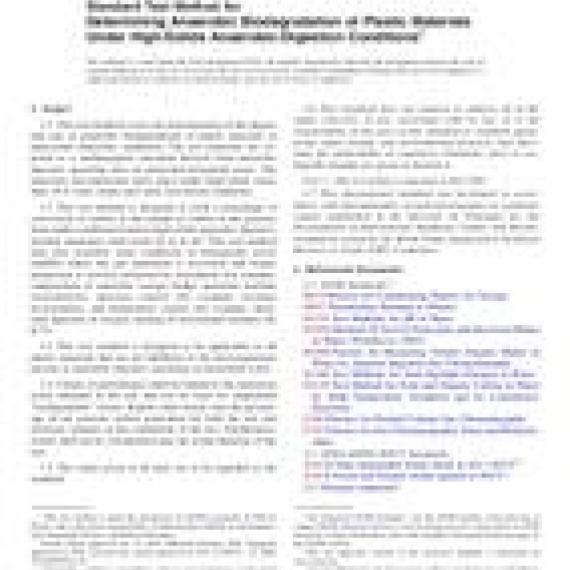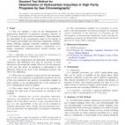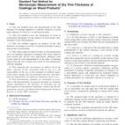No products
ASTM D5511-18
ASTM D5511-18 Standard Test Method for Determining Anaerobic Biodegradation of Plastic Materials Under High-Solids Anaerobic-Digestion Conditions
standard by ASTM International, 01/15/2018
Full Description
1.1This test method covers the determination of the degree and rate of anaerobic biodegradation of plastic materials in high-solids anaerobic conditions. The test materials are exposed to a methanogenic inoculum derived from anaerobic digesters operating only on pretreated household waste. The anaerobic decomposition takes place under high-solids (more than 30% total solids) and static non-mixed conditions.
1.2This test method is designed to yield a percentage of conversion of carbon in the sample to carbon in the gaseous form under conditions found in high-solids anaerobic digesters, treating municipal solid waste (1, 2, 3, 4).2 This test method may also resemble some conditions in biologically active landfills where the gas generated is recovered and biogas production is actively promoted by inoculation (for example, codeposition of anaerobic sewage sludge, anaerobic leachate recirculation), moisture control (for example, leachate recirculation), and temperature control (for example, short-term injection of oxygen, heating of recirculated leachate) (5, 6, 7).
1.3This test method is designed to be applicable to all plastic materials that are not inhibitory to the microorganisms present in anaerobic digesters operating on household waste.
1.4Claims of performance shall be limited to the numerical result obtained in the testand not be used for unqualified biodegradable claims. Reports shall clearly state the percentage of net gaseous carbon generation for both the test and reference samples at the completion of the test. Furthermore, results shall not be extrapolated past the actual duration of the test.
1.5The values given in SI units are to be regarded as the standard.
1.6This standard does not purport to address all of the safety concerns, if any, associated with its use. It is the responsibility of the user of this standard to establish appropriate safety, health, and environmental practices and determine the applicability of regulatory limitations prior to use. Specific hazards are given in Section 8.
Note 1:This test method is equivalent to ISO15985.
1.7This international standard was developed in accordance with internationally recognized principles on standardization established in the Decision on Principles for the Development of International Standards, Guides and Recommendations issued by the World Trade Organization Technical Barriers to Trade (TBT) Committee.


































